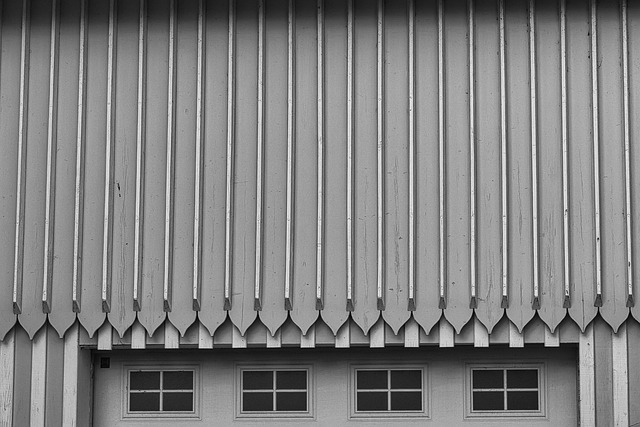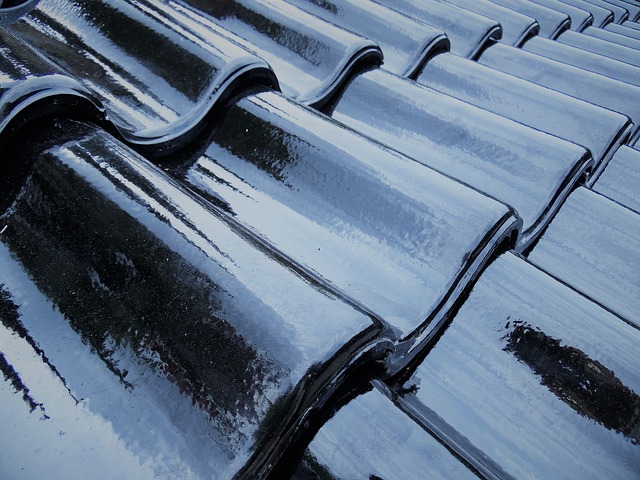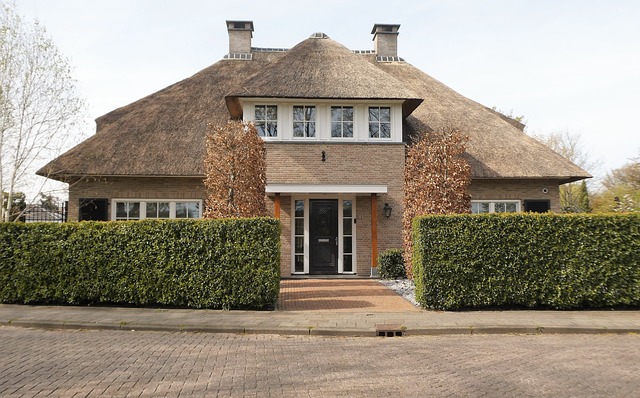Roofing services vary based on roof types—gable, hip, and flat—each with unique characteristics for different buildings and climates. Choosing the right service involves understanding these variations, structural needs, aesthetic preferences, and local weather patterns. Regular maintenance and inspections are vital for extending a roof's lifespan, while emergency repairs protect properties during severe weather events. Eco-conscious options like reflective and cool roofs enhance energy efficiency. High-quality insulation further improves comfort and saves on utility costs. Selecting an experienced provider with quality materials and guarantees ensures a durable, dependable roof.
Roofing is a fundamental aspect of any structure, offering protection from the elements and enhancing aesthetic appeal. This comprehensive guide delves into the diverse world of roofing services, catering to both residential and commercial needs. From understanding various roof types to exploring energy-efficient options, we cover everything essential for informed decisions. Learn about common residential roofing issues, commercial design considerations, installation processes, maintenance tips, and the critical role of professional roofers in emergency situations. Discover how choosing the right roofing service provider can safeguard your investment and ensure long-lasting protection.
Understanding Different Types of Roofs

Roofing services vary greatly depending on the type of roof you have or want to install. The most common types include gable, hip, and flat roofs. Each has unique characteristics that influence its suitability for different buildings and climates. Gable roofs, for instance, are pitched and often found in traditional residential homes, offering a classic aesthetic. Hip roofs, characterized by their sloping edges on all sides, provide better protection against water runoff and are popular in regions with heavy rainfall. Flat roofs, as the name suggests, have a level surface and are commonly seen in commercial buildings or modern architectural designs, requiring specific roofing materials to withstand environmental conditions.
Choosing the right roofing service involves understanding these variations and selecting a style that aligns with your structural needs, aesthetic preferences, and local weather patterns. Professionals in the roofing industry can guide you through this process, offering expert advice tailored to your property’s requirements, ensuring durability, and enhancing energy efficiency.
Residential Roofing: Common Issues and Repairs

Residential roofing often faces unique challenges due to varying weather conditions, age, and structural integrity. Common issues include leaks, missing or damaged shingles, and flashing problems around chimneys and vents. These issues can lead to interior damage, mold growth, and high energy bills.
Repairs for residential roofing involve replacing missing or damaged shingles, re-sealing the flashing, and addressing leaks in the underlayment or deck. Regular maintenance, such as checking for loose or curled shingles, can prevent major problems. Homeowners should also consider professional roofing services for more complex repairs, like reroofing due to extensive damage or old age, ensuring long-lasting protection against the elements.
Commercial Roofing: Materials and Design Considerations

Commercial roofing involves unique materials and design considerations to withstand the demands of larger structures. Unlike residential roofs, commercial rooftops often need to support heavier loads due to extensive equipment, additional floors, or large span areas. Therefore, robust materials like metal, concrete tiles, or specialized flat roof membranes are commonly used. These options offer superior strength, durability, and resistance to extreme weather conditions, ensuring the longevity of the roofing system.
Design aspects for commercial roofing services include structural integrity, drainage efficiency, and fire safety. Proper slope and drainage systems are crucial to prevent water damage and buildup, which can be a significant concern in low-lying areas or regions with heavy rainfall. Additionally, fire-resistant underlayments and reflective coatings can significantly enhance the safety and energy efficiency of commercial buildings, making them essential considerations in the roofing design process.
Installation Processes: Step-by-Step Guide

The installation process for roofing services begins with meticulous preparation, ensuring a solid foundation for your new roof. It starts with a detailed assessment of the existing structure and choosing the right materials suitable for the local climate and building style. This step is crucial as it dictates the longevity and performance of the roof. Once the design and materials are finalized, the process moves to setting up the work area, securing proper permits, and preparing the roof deck. The installation then progresses in a systematic order: starting from the edges, laying down underlayment, installing flashings for corners and penetrations, and then placing each layer of shingles or tiles precisely, ensuring overlap and secure fastening.
As the process unfolds, skilled technicians work meticulously to create a waterproof barrier, crucial for protecting against the elements. This involves sealing joints, vents, and other critical areas with precise cuts and installations. The final touches include adding ridge caps, checking for leaks, and ensuring all components are securely fastened. This step-by-step approach guarantees a robust roofing system, offering peace of mind and protection for years to come, showcasing the expertise behind quality roofing services.
Maintenance Tips for Longevity and Protection

Regular maintenance is key to extending the lifespan of your roof and ensuring optimal protection for any property. For residential or commercial roofing services, a preventative approach should be adopted. This includes regular inspections to identify and address issues early on, such as missing or damaged shingles, leaks, or signs of wear and tear.
Simple yet effective tasks like clearing gutters of debris, checking valve functionality, and inspecting the roof’s structural integrity can significantly impact the overall health of your roofing system. Using appropriate cleaning solutions and avoiding harsh chemicals is also crucial to maintain the quality of materials without voiding warranties. These routine practices will contribute to a durable, long-lasting roof that provides shelter and security for years to come.
The Role of Roofers in Emergency Situations

In emergency situations, such as severe weather events like storms or hurricanes, roofers play a critical role in providing essential roofing services. Their expertise is invaluable when it comes to repairing or replacing damaged roofs, ensuring homes and businesses remain protected against further harm. Quick action by these professionals can prevent water infiltration, which could lead to extensive interior damage and costly repairs.
Roofers are often the first line of defense in post-disaster assessments, offering their skills to help stabilize structures and mitigate risks. They work tirelessly to provide temporary solutions while longer-term repairs are being planned, ensuring that communities can begin the process of recovery more effectively. Their dedication and specialized knowledge make them key contributors during emergency response efforts, enhancing the resilience of both residential and commercial properties.
Energy-Efficient Roofing Options

In today’s eco-conscious world, energy-efficient roofing options are gaining popularity among both residential and commercial property owners. These advanced materials and technologies not only reduce carbon footprints but also lower heating and cooling costs significantly. One of the most popular choices is reflective roofing, which uses special coatings to reflect sunlight, keeping buildings cooler during hot summers. This reduces the need for air conditioning, thereby saving energy and money.
Another innovative option is cool roofs, designed to absorb less heat from the sun. These roofs are often made with lightweight materials, such as concrete or clay tiles treated with special coatings, that maintain lower surface temperatures compared to traditional dark roofing materials. By choosing energy-efficient roofing services, property owners can contribute to sustainability while enjoying long-term savings on utility bills and helping to mitigate the urban heat island effect.
Insulation: A Key Component in Roofing Systems

In the world of roofing services, insulation plays a pivotal role in enhancing the overall performance and energy efficiency of any structure. It acts as a crucial barrier, sealing in heat during colder months and keeping out excessive heat during summers, thereby significantly improving indoor comfort. Proper insulation is an often-overlooked but essential component in roofing systems, offering long-term benefits for both residential and commercial properties.
When discussing roofing services, professionals emphasize that high-quality insulation prevents temperature transfer between the interior and exterior environments. This simple yet powerful mechanism can lead to substantial energy savings, reducing utility costs for homeowners and business owners alike. By creating a protective layer, insulation also contributes to extending the lifespan of roofs, as it protects against extreme weather conditions, moisture intrusion, and temperature fluctuations that can cause damage over time.
Choosing the Right Roofing Service Provider

Choosing the right roofing service provider is a crucial step in ensuring your residential or commercial property has a durable and reliable roof. Look for a company with extensive experience, specializing in various roofing types and styles. Reputable firms should offer free estimates, use high-quality materials, and provide guarantees on their work to protect your investment.
When evaluating options, consider customer reviews, local references, and the expertise of the roofing team. Licensed and insured contractors ensure compliance with building codes and offer peace of mind in case of unexpected issues. Ask about their process, from initial assessment to installation or repair, to make an informed decision for your roofing needs.
